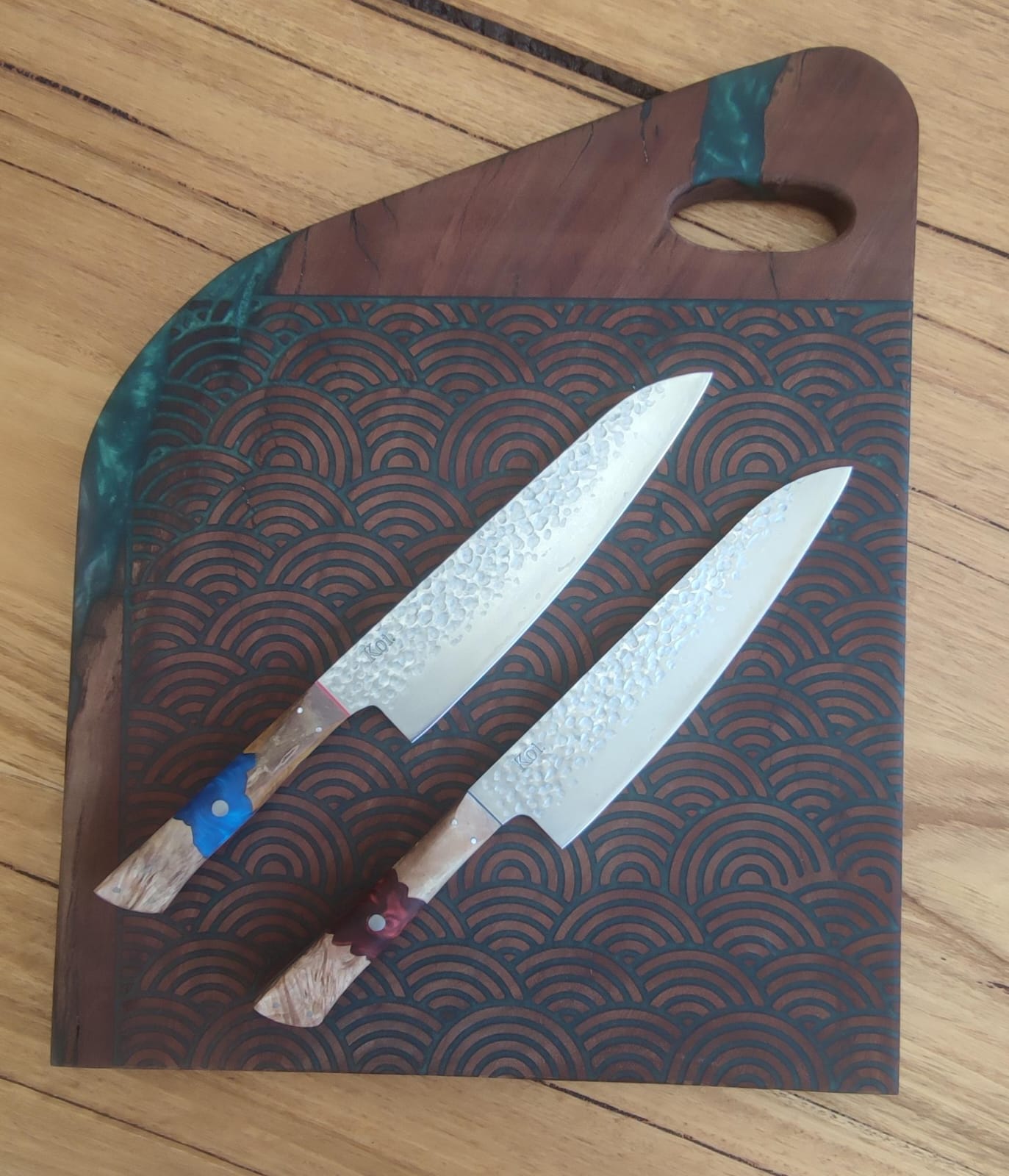When choosing the knives for your kitchen, size and shape play a considerable part. It is why the type of knives you have in your inventory can make all the difference. Should you go for a multi-function, lightweight knife or a heavier, more robust version?
Throughout this piece, you’ll learn about the distinction between two contrasting qualities of knives. It will help you decide which one suits your kitchen better.
What is a Paring Knife?
A favourite of professional chefs the world over, the paring knife has a highly durable, short blade. The overall length varies between 20-30 cm (8”-12”), while the blade length can vary from 8-10 cm (3.2”-3.9”). It is mainly used for chopping or slicing vegetables with speed and precision.

Being a small knife, it is crucial for the handle to feel comfortable in your hand. Most paring knives are designed for cutting on chopping boards or in-hand preparations like peeling garlic. A durable paring knife is one where the handle allows for a firm grip, and the blade is convenient to maintain.
What is a Petty Knife?
The Japanese answer to the Western utility knife, the petty knife gets its name from the French word ‘petit’, meaning ‘small.’ It is smaller than a chef’s knife with a curved, lighter blade that makes it perfect for most kitchen applications. You can use a petty knife to cut fruits, dice vegetables, slice skin, or debone meat.

Although this knife is made from the same steel and shape as the Gyuto, its length and lightweight design makes it more suitable for making finer cuts. One advantage over the paring knife is that it allows ample clearance between the handle and the blade edge, making it easier to slice and chop on a board (without bumping your knuckles).
What is the Difference Between a Paring Knife and a Petty Knife?
With the essential functions of both the paring and petty knife cleared, let’s take a closer look at the more nuanced differences between them.
Size
One glance at both knives, and you can immediately notice the difference in size. A regular petty knife is about 150 mm (5.9”) in total length, while a paring knife is 105 mm (4.1”) long.
The thickness of the knives varies as well. Paring knives tend to be the same thickness throughout the blade, where the petty’s thickness narrows towards the tip. The main reason for this is to create more flexibility in petty knives and a more rigid blade on paring knives.
The Shape of the Blade
A significant difference that sets a petty and paring knife apart is the shape of their blade. The petty knife resembles a more traditional blade with a slight curvature toward the tip. A paring knife usually has a much straighter blade and a more robust tip to prevent chipping.
Grip
The blade of the paring knife requires a comfortable grip usually with full-tang handle construction. The feature makes it comfortable for ambidextrous use since the long handle can accommodate the thumb of either hand. Moreover, this makes it much easier to cut ingredients held in your hands.
In the case of the petty knife, the grip is further away from the blade. This knife is all about precision cuts, making the grip much more comfortable for one hand. Some variants save on weight additionally by using half or hidden tang handles, improving balance and reducing overall weight of the knife.
Tip of the Blade
The petty knife has a shallow, sharp tip that allows accurate movement across various ingredients. Still, it makes the blade more difficult to control than the paring.
In contrast, the paring knife has a broader tip that grants it more control at the cost of precision. The tip also more rigid than the petty, making it easier to use in your hands.

Weight
On average, paring knives are lighter than petty knives. Their small handles and short blades allow you to easily pack them in a picnic pouch. Although petty knives are slightly heavier, they usually have finer blade tips making them more nimble.
Therefore, the petty knife is more agile. When it comes to the cutting action, you can use it for dozens of slices without your hands tiring. On the flip side, the paring knife is your best bet if you need a durable blade for chopping slices all day long.
Finish
As petty knives are made from high-grade tempered steel and great skill, they usually have a polished finish. It helps keep the blade sharp and spotless. Paring knives have a more rustic finish since carbon steel is less expensive. It also requires less time and skill to make.
You can find each knife in a multitude of finishes:
- Kurouchi (black hammered finish)
- Damascus (rippled alloy from folding the metal multiple times)
- Polished (also known as Migaki finish)
- Sandblasted (also known as Nashiji or 'Nashi pear' finish)
Handle
Both the paring and petty knives are generally used with wooden or composite handles. For petty knives, the handle is shorter in length to allow for a diverse range of precise movements from a lighter blade. Similarly the Paring knife has short handles. to help when using in-the-hand technique.
Maintenance
The AUS10 tempered steel in a petty knife requires more care and attention to stay sharp. It needs sharpening every few months to remain effective. Furthermore, the sharpening should be carried out carefully, as the thin blade can easily bend or break when applying enough force.
Paring knives are low-maintenance. You need only sharpen them twice a year, and they would still be quite good at the job. Carbon steel can easily resist rust and stains even with ample use as well.

Conclusion
Like cars, each knife suits a specific purpose and preference. As such, whether you want to go for a petty or paring knife depends on how you work in the kitchen. If you’re looking for durability and usually utilize a chopping board, then the paring knife is the apt choice for you.
However, if you want a multi-purpose, lightweight knife that can help you cook a wide range of delicacies, there are a few alternatives to the petty knife. Remember, regardless of the knife you choose; it pays to invest in the quality of the blade to get the most out of it long-term.




